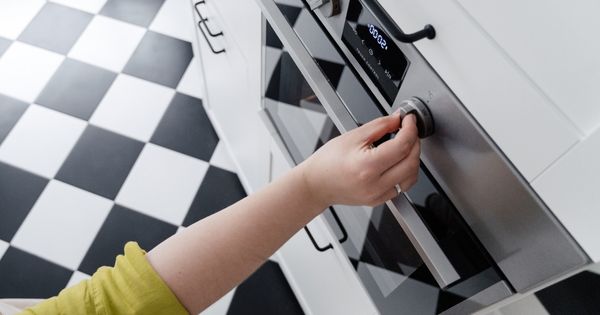In our modern lives, household appliances are like silent helpers, making our daily routines smoother and more convenient. But what happens when these trusty devices decide to act up? Before you reach for the phone to call a repairperson, there are often simple troubleshooting steps you can take to fix the problem yourself. In this blog post, we’ll explore some common household appliance problems and provide you with easy-to-follow solutions that can save you time and money. Of course, there are appliance repair companies available if you cannot get to the bottom of the issue yourself.

Section 1: The Refrigerator’s Ice Maker Isn’t Working
One of the most frustrating moments in the kitchen is when you crave ice-cold drinks, and your refrigerator’s ice maker decides to go on strike. Here’s how you can troubleshoot this problem:
- Check the Water Supply – Ensure that your refrigerator is properly connected to the water supply. Inspect the water line for kinks or leaks. Replace any damaged tubing.
- Ice Maker Switch – Verify that the ice maker switch is turned on. It’s usually located inside the freezer.
- Clear Obstructions – Sometimes, ice cubes can get stuck in the ice maker’s dispenser. Clear any obstructions to allow ice to flow freely.
- Temperature Setting – Ensure that the freezer’s temperature is set to the recommended level (usually around 0°F or -18°C).
Section 2: Washing Machine Won’t Drain
A washing machine that refuses to drain can turn laundry day into a nightmare. Here’s how to tackle this issue:
- Check for Clogs – Inspect the drain hose for clogs or kinks. Remove any debris and straighten the hose.
- Pump Filter – Washing machines have a pump filter that can get clogged over time. Refer to your user manual for instructions on how to clean it.
- Load Balance – Unevenly distributed laundry can prevent the machine from draining properly. Rearrange the clothes for a more balanced load.
- Lid Switch – Top-loading machines have a lid switch that may not engage if the lid isn’t closed properly. Ensure the lid is properly closed.

Section 3: Oven Isn’t Heating Up
A malfunctioning oven can disrupt meal preparation. Here’s what you can do if your oven isn’t heating up:
- Check the Power Supply – Make sure the oven is plugged in correctly and is receiving power. The cause might be a tripped circuit breaker
- Thermostat Calibration – If your oven’s temperature seems off, it might need calibration. Consult your manual for instructions on how to adjust it.
- Igniter Inspection – Gas ovens have an igniter that can wear out over time. It will need replacing if it is not glowing.
- Burned-out Heating Element – Electric ovens rely on heating elements. If one is visibly damaged or not heating, it should be replaced.
Section 4: Microwave Isn’t Heating
When your trusty microwave suddenly stops heating your leftovers, try these troubleshooting steps:
- Check the Door – Microwaves have safety mechanisms that prevent them from operating if the door isn’t securely closed. Ensure the door latch is functioning correctly.
- Power Supply – Verify that the microwave is plugged in and receiving power. Test other appliances in the same outlet to ensure it’s working.
- Magnetron – The magnetron is the component responsible for generating microwaves for heating. If it’s faulty, it may need replacement by a professional technician.
- Fuse Check – Microwaves have fuses that can blow out due to electrical surges. Refer to your user manual to locate and replace the fuse if necessary.
Section 5: Dishwasher Isn’t Cleaning Dishes Properly
A dishwasher that doesn’t do its job can be a real let down. Here’s how to address cleaning issues:
- Clean Filters – Dishwashers have filters to trap food particles. Regularly clean these filters to ensure they’re not obstructed.
- Check Spray Arms – Ensure that the spray arms can move freely and are free from debris.
- Proper Loading – Overloading the dishwasher can impede water circulation and cleaning. Load dishes properly, leaving space for water and detergent to reach all items.
- Water Temperature – Make sure your water heater is set to a temperature that allows the dishwasher to operate effectively (usually around 120°F or 49°C).

Section 6: Troubleshooting Tips for General Appliance Problems
Now that we’ve covered specific appliance issues, here are some general troubleshooting tips that can apply to various appliances:
- User Manual – Keep your appliance’s user manual handy. It’s a valuable resource for troubleshooting and maintenance instructions.
- Safety First – Always unplug or disconnect appliances from the power source before attempting any repairs or maintenance.
- Regular Maintenance – Preventive maintenance will prolong the lifespan of your appliances. Clean filters, coils, and other accessible parts as recommended in the user manual.
- Warranty Coverage – If your appliance is still under warranty, consult the manufacturer or retailer for repairs or replacements to avoid voiding the warranty.
- Professional Help – When in doubt or dealing with complex issues, it’s best to consult a professional appliance technician. Trying complex repairs without the required expertise can result in additional harm.
Conclusion
Household appliances can bring great convenience to our lives, but they can also be a source of frustration when they malfunction. However, many common appliance problems can be resolved through simple troubleshooting steps. By following the guidelines provided in this blog post, you can save time and money by addressing these issues on your own.
Remember to always prioritize safety, consult your appliance’s user manual for specific instructions, and don’t hesitate to seek professional help for more complex problems. With a little patience and some basic troubleshooting skills, you can keep your household appliances running smoothly for years to come. Happy troubleshooting!
 Kaboutjie SA Mommy Blogs by Lynne Huysamen
Kaboutjie SA Mommy Blogs by Lynne Huysamen




